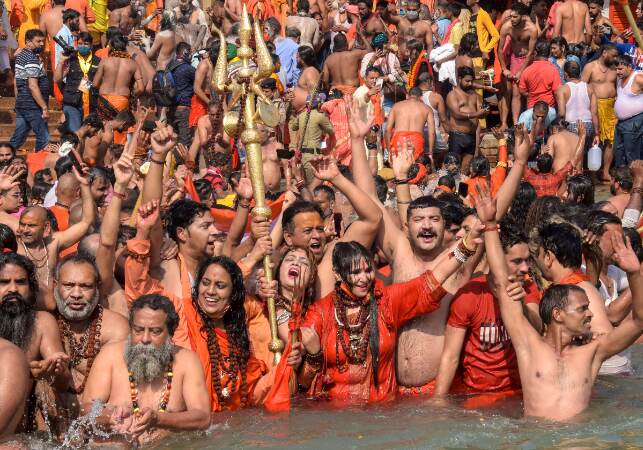An unfortunate turn

Since its start on April 1, the Maha Kumbh Mela in Haridwar has been a topic of intense discussion. Owing to its status and importance, the Kumbh Mela has attracted huge crowds. Reports state the attendance on an average day is around one to two million people, a number which swells to around five to six million on auspicious 'snan' days. In the background to this epic gathering, the Covid case count in India is soaring to a never before seen extent. The daily case count has shot well beyond 2,00,000 cases a day in this latest wave of Covid — 2,62,786 cases as I write this. The government has blamed this new wave on the spread of different Covid variants and a general laxity amongst the population in regards to safety measures. Both these factors are on display in the case of the Kumbh Mela. Not only do the huge crowds present an ideal opportunity for the spread of many different variants, but the lack of safety measures being observed by those in attendance is also making it much much easier for the virus to spread and infect the maximum number of people. Both the Centre and Uttarakhand government had anticipated that managing the event safely would be a difficult task. New guidelines were issued, testing capabilities were enhanced and the police forces made ready to take on the difficult task of reinforcing rules amidst religious fervour. Unfortunately, the many fines that were doled out and appeal to stay safe that were made had little effect. It was reported that between April 10-14, over 1,700 attendees tested positive. This number came from a combination of RT-PCR tests and antigen tests that were performed not just on attendees but also the seers from the various 'akharas' in attendance. The medical officer in charge admitted that the number would likely have been higher as more test results were being awaited. There is also the matter of testing not being an easy task to achieve during such a major event. The sampling team apparently had to be pulled away a few times to avoid creating a stampede. The devastation has been both difficult to assess and contain. Over 68 of the top seers attending the mela have tested Covid positive. Mahamandaleshwar Kapil Dev from the Nirwani Akhada was one of these top seers who died this week from Covid complications. As a result of the rising toll, akhadas such as the Niranjani Akhada, the second largest of its kind, pulled out of the mela. Media houses, both domestic and abroad, noted with an increasingly grim tone that this most auspicious of festivals was turning into a major super spreader event, easily at par in terms of Covid spreading potential with the mass election rallies being carried out across the nation. Such events reverse months of careful planning and precautions with Covid safety being cast into the wind in favour of making these events 'all-inclusive'. Scenes from the mela have been dizzying to say the least. Interviews reveal that many attendees are not particularly keen to think about the ongoing pandemic and are content to leave their fate and those of others to divine intervention. The organisers and the akhadas both held firm against the cancellation of the mela even as concern over the Covid spreading potential of the event raged across the nation. Day after day, as case counts grew, however, the government of Uttarakhand announced that it was 'closely' monitoring the situation and would take further action as it sees necessary. And yet the festival was continuing on with millions gathering for every new 'snan' event. But it would seem that reason has finally prevailed. In response to PM Modi's appeal to keep the rest of the mela 'symbolic', the chief of the Juna Akhada announced that Kumbh Mela 2021 was being brought to an end. It was announced that the idols have been immersed and the organisers are now appealing for the maximum number of people to continue the 'symbolic' celebration of the mela. Elders and children in particular have been asked to avoid coming for the 'shahi snan'. Better late than never but the question is that will it be enough? Will the appeals to not come for the remaining 'snan' be heeded? Is it too late either way? While many states require those coming back from the mela to quarantine for 14 days, it is hard to say if this will be enough to substantially cut down the risk of attendees bringing back the virus with them. This, to say the least, is an unfortunate turn of events. As previously stated religion and religious leaders have a great part to play in such pandemics. They can use their influence to rally their followers to follow the best medical advice and help the government combat the onset of Covid-precaution fatigue.



